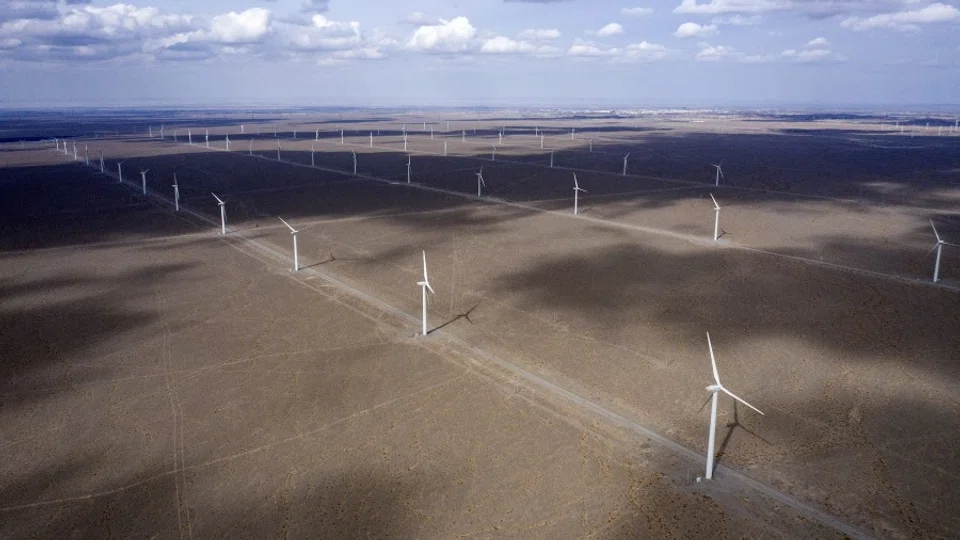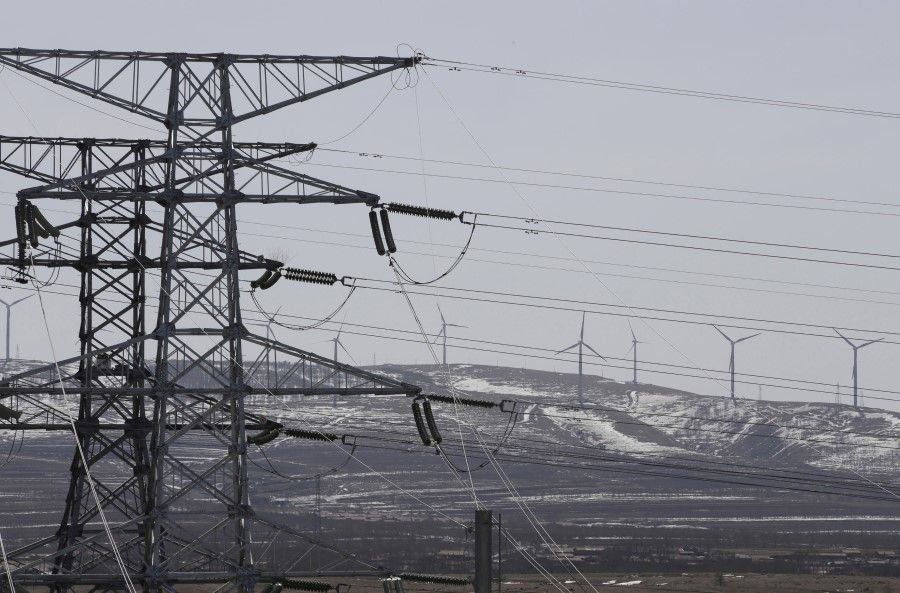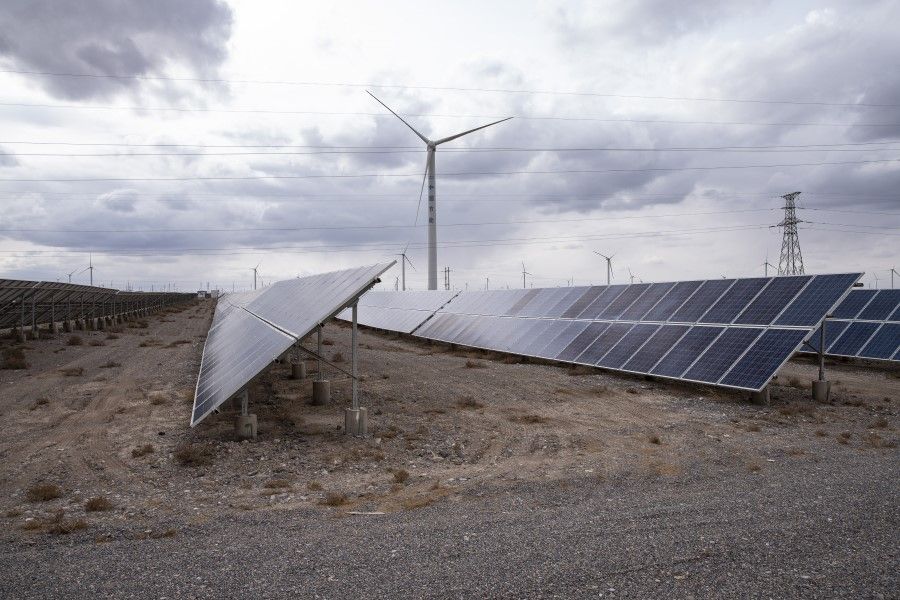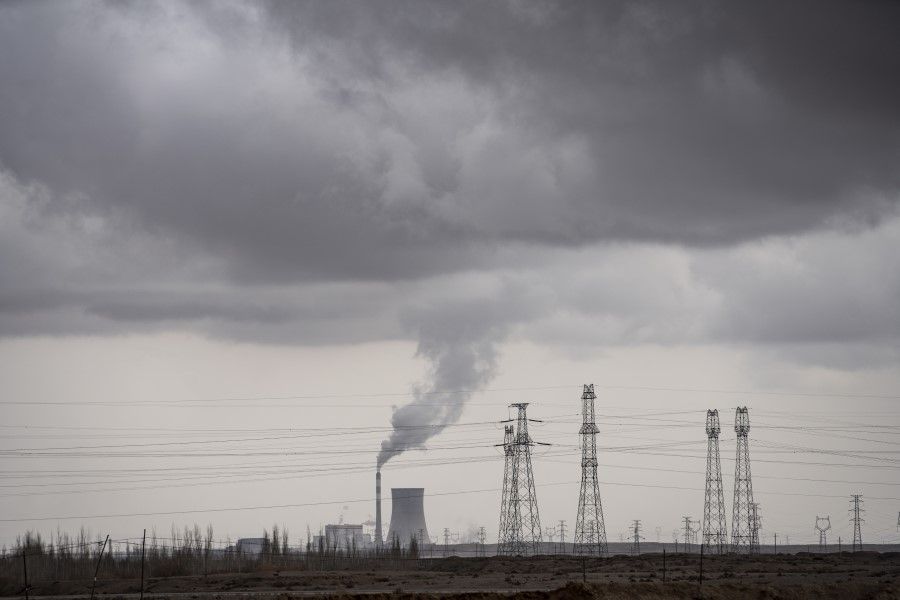Can China keep its climate change promises?

Speaking to the UN General Assembly in September 2020, President Xi Jinping announced that China will aim to achieve a CO2 emissions peak before 2030 and aim to make China a zero-emissions nation by 2060. At the Climate Ambition Summit in December 2020, the five-year anniversary of countries agreeing to the Paris Agreement, Xi followed up by announcing that China will take additional steps to deliver on its 2030 ambitions.
These steps include the following commitments for 2030: China will lower its carbon dioxide emissions per unit of GDP by over 65% from the 2005 level, a higher percentage than the previous commitment of 60-65%. It will increase the share of non-fossil fuels in primary energy consumption to around 25%, more than the previous 20%. It will aim to increase the forest stock volume by 6 billion cubic metres from the 2005 level. Finally, China intends to increase its total installed capacity of wind and solar power to over 1 200 gigawatts - almost three times the capacity of the 415 gigawatts installed in 2019.
China's plans
In January 2021, the Ministry of Ecology and Environment (MEE) issued a document outlining the actions that will be taken to integrate climate change concerns, entitled "Guiding Opinions on Coordinating and Accelerating Work Related to Climate Change and Ecological Protection". This document envisages that during the 14th Five-Year Plan period, an overall pattern of integrating climate action and ecological conservation will take shape, and strategic planning will strictly control high emissions and high energy-consuming projects. It also calls for the formulation of a dedicated climate change law. The latter was already announced by MEE Vice-Minister Zhao Yingmin in December.
China is already home to the world's largest production capacity in wind turbines and solar panels, with the Chinese share of global wind turbine production around 45%, while its share of solar panel manufacturing is about 72% of total global output.

In January, the MEE also published the details of administrative measures for carbon trading, officially setting up the regulatory framework for China's national carbon emissions trading scheme (ETS). The operation of the national ETS is expected to start in mid-2021, following up on the operation of pilot regional emissions trading systems in China since 2013. This initiative should help reduce Chinese carbon emissions, first in the electric power sector which accounts for around 30% of China's emissions, and gradually expanding to other heavy industrial sectors such as cement and steel production that contribute significantly to national emissions.
The Chinese leadership's latest commitments to green development are provided for in the 14th Five-Year Plan (2021-25). The plan prioritises green innovation, for example, by supporting wind and solar energy as well as electric automobiles, mandating green building materials, building low-carbon cities, and spearheading a green transformation of agriculture. Another important addition is the recognition of the need to mitigate non-C02 greenhouse gas emissions, such as methane and HFCs.
It is envisaged that the energy consumption per unit of GDP and carbon dioxide emissions per unit of GDP will be reduced by 13.5% and 18%, respectively, during the period. Thus, a key pledge is to "resolutely curb the blind development of high energy-consuming and high-emission projects, and to focus on controlling fossil energy consumption, and promote green transformation." But the government still insists on using the carbon emission intensity of emissions per unit of GDP as its main indicator, an approach that will allow China to continue to raise its overall level of emissions as the economy grows. In contrast, most countries have committed to a fixed carbon emission cap - a target that is also recognised by some Chinese experts as necessary to seriously curb emissions.
Two-pronged approach: low-carbon innovation and emissions trading
Simultaneously, the 14th Five-Year Plan demonstrates that China has intensified its green innovation policy, lending new support to the development of renewable energy and other technologies to reduce China's carbon footprint during the decade, until non-fossil energy sources contribute at least 20% to total energy consumption by 2025.
China is already home to the world's largest production capacity in wind turbines and solar panels, with the Chinese share of global wind turbine production around 45%, while its share of solar panel manufacturing is about 72% of total global output. Installed wind power capacity has also increased dramatically, from 31 GW in 2010 to 280 GW in 2020; from 2015 to 2020, solar power installations grew from 42 GW to 250 GW. At this rate, an installed capacity of 1,200 GW combined wind and solar power would be within reach in 2030. A further reduction of the cost of non-fossil sources of energy could potentially increase the share of such sources to 60% of energy consumption in 2030.

The need to advance green innovation extends to many sectors in society. In addition to supporting R&D in wind and solar energy, there is also an urge to promote innovation in the nuclear energy industries which are considered essential to China's low-carbon future. Moreover, it will be important to create new and better technologies that can save energy, both in industry and building construction.
One potential bottleneck in the drive to reach low-carbon energy supply is the State Grid Corporation of China, which earlier experienced problems integrating new renewable sources of power. For instance, in 2016, the grid restricted access to electricity from renewable sources for more than 30% of newly installed solar capacity in Xinjiang province - leading to a substantial waste of energy!
Accordingly, the 14th Five-Year Plan also envisages a higher level of innovation and expansion of ultra-high electricity transmission infrastructure; this will be combined with the establishment of efficient electric power markets across Chinese provinces, something that has been woefully inadequate so far.
The other key element of China's climate policy is the creation of the national emissions trading scheme (ETS) which, as mentioned above, is expected to become operational by mid-2021. The national ETS will regulate more than 2,200 companies from the power sector, which together emit more than 26,000 tCO2 per year (including combined heat and power, as well as captive power plants of other sectors). The initial focus on the electric power generation industry has been based on the fact that utilities still depend to a large extent on coal-fired electricity generation.
The Chinese ETS is designed to cover more than four billion tons of CO2, accounting for around 40% of national carbon emissions. Policymakers expect that a national ETS will help China reduce its emissions in an efficient and effective manner. At the same time, it will put pressure on power plants to engage in technology transfer or innovation on carbon-reducing green technologies. The experiments with pilot ETS did induce some firms to undertake low-carbon innovation, once the carbon price in the market was sufficiently high. However, in most of the pilot ETS the technology inducement effect was negligible.
China's dependence on coal for energy production has been a notorious barrier to improvement of not just emission rates, but also the struggle against air pollution and its related health effects in urban environments.
Challenges: investment, carbon price and vested interests
The challenges ahead are not insignificant, however. The transition to a low-carbon economy - and ultimately to a net-zero emission status in 2060 - will require huge investments and comprehensive reform. It has been estimated that China's total financial needs will reach 55.95 trillion RMB between 2016 and 2030 in order to achieve the targets incorporated in China's commitments submitted earlier to the UN. To reach the net-zero target for 2060 announced by President Xi Jinping, an estimated 90 to 100 trillion RMB would be required.
As a first step towards generating such financial resources, the People's Bank of China issued guidelines on the construction of a green financial system in 2016, and cities such as Tianjin have followed up with 10 measures promoting the establishment of a green bond market, green leasing, etc. in 2020.

The implementation of the national ETS will also be facing quite a few challenges. One of the problems that have plagued early ETS schemes has been the low price of carbon emission permits traded on the market. The European Union ETS set up in 2005 suffered from a surplus supply of carbon allowances allocated for free by national authorities, and therefore a low carbon price. Only during the period 2013-2020, when 57% of the total allowances were sold by auction, did the carbon price rise to reasonable levels in recent years - reaching 31 euros per tonne CO2 (US$37).
The Chinese ETS operates with free allocation of allowances, and the average price is expected to reach only 41RMB (US$6.3) per tonne of CO2 in 2021. Auctioning is planned for the future, but even then, the price is unlikely to reach international levels - and certainly not to the level of US$50-100 per tonne that has been recommended for 2030 by leading economists. In other words, prices for allowances on China's ETS may provide profitable opportunities for trade, but hardly offers inefficient power utilities the incentive to shift to green technology.
In 2020, China commissioned 38.4 GW of new coal plants, over three times the 11.9 GW commissioned in the rest of the world - the equivalent of more than one large coal plant commissioned in China per week.
The main culprit in the Chinese climate change game is coal. China's dependence on coal for energy production has been a notorious barrier to improvement of not just emission rates, but also the struggle against air pollution and its related health effects in urban environments. The Chinese leadership succeeded in reducing the contribution of coal-generated power to total energy consumption from 72.4% in 2005 to 57.7% in 2019, partly through the replacement of small, inefficient plants with larger ultra-critical versions. Nevertheless, many coal power plants run at low capacity, being utilised on average for 4,361 hours in 2018, rather than the 5,300-5,500 hours projected by the industry that year. Many of the units stayed idle for a good part of the year, and almost half of China's coal fleet reported a loss.
Nevertheless, local governments are still frantically building new coal power plants, often prompted by the need for provincial officials to show economic growth for purposes of promotion, etc. In 2020, China commissioned 38.4 GW of new coal plants, over three times the 11.9 GW commissioned in the rest of the world - the equivalent of more than one large coal plant commissioned in China per week. In addition, Chinese provinces granted construction approval to 36.9 GW of coal power projects in 2020. The pipeline for coal power projects thus now includes both 88.1 GW under construction and 158.7 GW proposed for construction.
It is not just overseas observers who are worried about this trend - January 2021 witnessed a new report by the Central Environment Inspection Group that criticised the National Energy Administration for allowing large increases in coal power and heavy industry capacity in eastern provinces and ignoring the leadership's priorities on renewable energy.
There are, however, other powerful vested interests that lobby for additional coal power, despite the clear evidence of overcapacity in the sector. In 2019 China Electricity Council (CEC) - the influential industry body representing China's power industry - proposed to raise the limit for coal power capacity to 1,300 GW in 2030 adding almost 300 GW to the current capacity. The 14th Five-Year Plan does not clearly limit the role of coal power, and targets remain a long way from reducing the capacity of the sector by a third, as suggested by experts. Most likely, Chinese lobbying for more coal power will leave the country with a vast number of stranded assets - projects that will have to be dismantled before the end of their economic life.
China would emerge out of this first half-century as a leading innovator in green technology, with a major role in supplying the world with affordable and advanced low-carbon technologies.

Benefits from climate action
There is no doubt that reining in the excessive greenhouse gas emissions, taking a lead in green innovation, and cutting the addiction to coal would benefit China immensely.
First, China belongs to the countries that are most likely to be hit with serious natural disasters, flooding and other destruction as a consequence of climate change. The costs of adaptation to such catastrophes will be huge, and the economic effects deleterious.
Second, any forceful implementation of China's commitments to reducing emissions and moving to clean technology will help cut air pollution. The benefits for life quality and health in Chinese cities are obviously great.
Third, cost-benefit analysis of investments in green innovation such as renewable energy demonstrates that such allocation of resources will be profitable for China. A more aggressive solar and wind expansion with additional annual investments of about US$13 billion will save about $34 billion in fuel costs from now to 2030, leading to an overall annual saving of about $20 billion.
Finally, China would emerge out of this first half-century as a leading innovator in green technology, with a major role in supplying the world with affordable and advanced low-carbon technologies. This is a prospect that even researchers in the US are beginning to understand.
